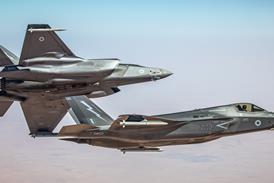Tim Furniss
US aerospace companies at the Show today celebrate the 50th anniversary of the first launch of a rocket from Cape Canaveral which kick-started America¹s space age.
An 18.2m (60ft) Bumper 8 rocket - a US-built German V2 missile, with a WAC Corporal second stage - lifted off under 24,494kg (54,000lbs) thrust from the mosquito-infested sand spit with only a lighthouse as a landmark. Launch time was 0929h.
Using a painter¹s scaffold as a service tower, a 30cm (1ft) thick slab of concrete as a launch pad, and a blockhouse made of a bank of sandbags built against fisherman¹s shack, the launch technicians, led by a GE engineering team, didn¹t know what to expect.
Watched by about five newsmen and photographers, Bumper 8 raced down the 320km (200 mile) Joint Long Range Proving Ground, established by President Harry Truman in 1949, proving the feasibility of a two-stage rocket.
The only instrumentation available at the time to track the liquid oxygen-kerosene V2 and its WAC, fuelled with hypergolic propellants was temporary mono-pulse radar and optical tracking on board two US Navy destroyers.
Bumper
The Bumper¹s launch base became known as the Air Force Missile Test Centre in June 1951, with its first launch of a Lark missile in October. The Cape never looked back.
Milestones in its history were the launches of the first US satellite, Explorer 1 aboard a Jupiter C booster in January 1958 and the first American man in space, Alan Shepard in a Mercury capsule lofted by a Redstone missile in May 1961.
Together with the adjoining NASA Kennedy Space Centre to the north, which was the site of the launch of Apollo 11 in 1969 and the first Space Shuttle, Columbia in 1981, the bustling area is now known as the Cape Canaveral Spaceport.
A far cry from the early days, when the Cape was inhabited by insects, reptiles and Red Indians.
Source: Flight Daily News




















